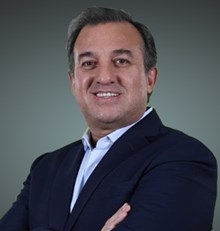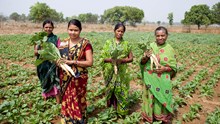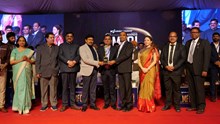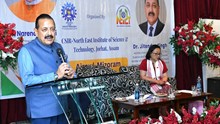
Being cold-blooded, fish grows faster during summer months and hence, need scientific management for optimized production. Dr. Meera D. Ansal, Head, Department ofAquaculture, College of Fisheries, Guru Angad Dev Veterinary & Animal SciencesUniversity (GADVASU), Ludhiana shared tips for reaping maximum benefit of the growth season.
-
She emphasized to provide sufficient comfortable zone to fish below the surface layer, which gets heated up beyond optimum temperature range (28-320C) during summers, by maintaining 5-6 feet water depth.
-
Provision of partial shading of the pond with no- deciduous trees also helps in mitigating the impact of high temperature.
-
Further, she advocated taking care of the water quality, where ‘Oxygen’ is the more important parameter. Oxygen levels may fall to lethal levels, especially during dawn, due to enhanced biological activity in the pond. Hence, she advised aerating the ponds during early hours of the day before sunrise, either by adding fresh water or by aerators.
-
Optimum oxygen level (≥ 5 mg/l or ppm) will keep the fish healthy and increase its food converting efficiency, leading to fast growth and higher productivity. If the fish come on the surface to gasp atmospheric air, provide aeration and also suspend manuring and feeding of fish. Partial water exchange improves water quality.
-
She recommended using nutrient-rich pond water to irrigate the paddy fields and adding fresh water in the fish ponds, which will improve pond water quality and reduce crop fertilizer requirement. It will increase fish production besides saving on fertilizer input cost in crops irrigated with pond water.

-
Farmers also need to check diurnal variation in water pH, which may fluctuate beyond
-
recommended range (7.5-9.0), due to excessive growth of algal blooms in the pond.
-
Algae grow very fast during summers and nutrient enrichment leads to the formation of algal blooms.
-
Manuring /fertilization of pond shall be suspended in case water turns dark green, dark brown or greenish brown in color and a green, brown or sometimes red colored algal mat appears on the water surface. Regular bottom racking with the help of barbed wire is recommended to prevent the accumulation of toxic gases like ammonia and carbon dioxide. Toxicity of ammonia in fish ponds increases with increase in temperature and pH, which can be reduced by keeping the ponds well aerated and adding a dose of gypsum/alum as per expert advice.
-
It is also very important to sustain regular plankton (natural fish food) production in the pond and provide a nutritionally balanced supplementary diet. Keep the pond rich in plankton through mixed utilization of organic manures and inorganic fertilizers.
-
Farmers are advised to use fully decomposed organic manures (FYM, biogas slurry, vermicompost or poultry manure) as per recommended rates and feed the fish daily with good quality feed having 25% crude protein @ 1.5-2.0 % of the fish body weight (1.5-2.0 kg feed per quintal fish) after sunrise (between 9-11 a.m.), preferably by bag feeding
-
Suspend feeding in case fish come to the surface for gasping atmospheric air or some kind of disease is observed in the fish. ‘Prevention is better than Cure’ is the ‘Golden Rule’ for disease management in aquaculture, said Dr. Meera.
-
Increased input in terms of seed, feed and fertilizer is a strict ‘NO’. It not only enhances input costs, but also deteriorates the water quality elevating the risk of stock loss.
-
Follow recommended prophylactic measures (liming, potassium permanganate/CIFAX application).
In case of disease occurrence, consult an expert for PH.NO.0161-2553305,
[email protected], [email protected]
















